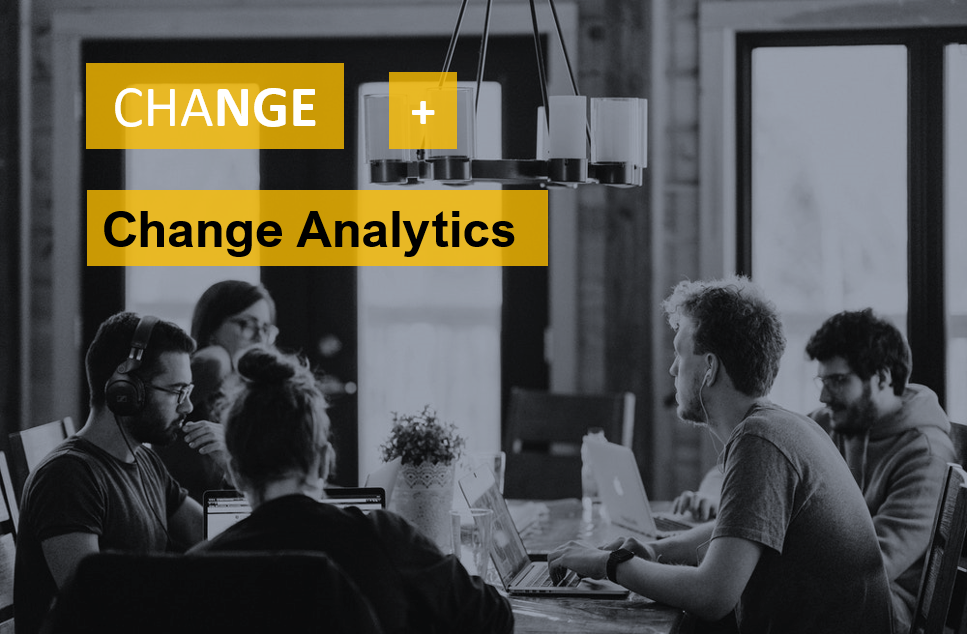Sign Up
Sign In
Blog

2019-02-11 09:01:09 Brenda Fox, IT & Technology Writer
Article Highlights
While the field of Human Resources (HR) has made great strides in recent decades, Change Management as a profession has never truly been data-driven because so many change-related topics have involved behavioral and attitudinal factors that are difficult to measure such as culture, leadership motivation, and commitment. Most leaders understand intuitively that these “soft factors” are important (e.g., it’s hard to get people to do things they don’t want to do and its challenging lead teams that are opposed to transition efforts) but these have never readily yielded themselves to empirical analysis. This made it difficult to analyze or validate cause-and-effect relationships, set up controlled experiments, and clearly demonstrate how change interventions deliver meaningful outcomes.
In the past, most change management models were deeply rooted in research that sought to explain how small groups adapt to workplace change. At that time, change professionals operated as artists and not scientists making it difficult to reach a high level of professionalism and attract the funding and resources required for getting the best change outcomes. While the change management profession is still in flux, the tide is beginning to shift.
Advancements in technology aided by big data have made many of these once-hidden dynamics significantly more data-driven creating the possibility for an intersection between change management and change analytics. Change management is in the midst of a shift from intuition to more feedback and data-based decision-making approaches, with program managers at the forefront of this shift. This move to a data-centric approach will shift change management from an art to a science, where change leaders can now rely on data to examine, inform and iterate their change management approach and strategies. Instead of waiting to get data themselves, employers can make use of data from mobile phones and other devices to collect feedback and manage change. These capabilities come at a critical time as a recent report found that HR leaders feel they are:
Now, more than ever, HR and Change Managers need the right tools to better predict and manage workplace change.
Retail professionals make use of demographic data to predict sales and develop future sales plans. Leaders at banks and financial institutions leverage predictive analysis that tells what customers are most likely to return. Now change leaders have tools to collect workers’ feedback, benchmark the results, predict likely future behaviors and attitudes, beginning-to-end, of the full lifecycle of their change projects.
The Great Shift
Change management is in the midst of a transition from an intuition-based approach to more data-centric decision-making that puts change managers on the front line. Businesses can now rely on data to inform and examine their change strategies because data removes the guesswork from the decision-making process around how to get people to commit to and buy-in to workplace change.
However, to remain competitive and innovative, businesses need to leverage data at the core of their change management processes. This is done by deploying platforms that ensure they can collect and act on critical employee feedback data. Unfortunately, many organizations are not yet up to this challenge and only firms that set themselves apart by collecting the right kind of change data and investing in their change analytics will meet this standard.
5 Steps to Better Manage Change and Save Money Using Change Data and Analytics
For businesses to save and manage money better using change data and analytics, here are some steps to take:
Finally, change data and analytics is critical for every organization that wants to save money and improve financial performance. With the right data, change managers can confidently build more accurate models and prescribe strategies that will help organizations meet their needs.
About Brenda Fox and The Change Shop™
Brenda Fox is a prolific writer whose work spans a broad range of subjects, but she is particularly passionate about the IT and the Tech sector. In her spare time, she enjoys travelling the globe in search of new adventures.
Can you use tools to manage change more effectively and save money using the right data? Try The Change Shop™ (TCS) free survey to see your personalized change commitment results. Also, checkout some of our free tools and resources. TCS offers comprehensive, cloud-based change management software built for multi-platform environments that helps major stakeholders in every business manage relationships, plan interventions and align around change impacts. It is the perfect platform for any change leader trying to digitally transform business their business, conduct a reorganization, or quickly integrate a recent acquisition.
Start a conversation with us about effective organizational change practices and find out how The Change Shop™ can help your team build the change capabilities your organization needs. Contact us toll-free at (877) 412-6628 or email us at Contact@TheChangeShop.com to schedule a free consultation or platform demo.
3
Comments
Test
gfdnchj
Test